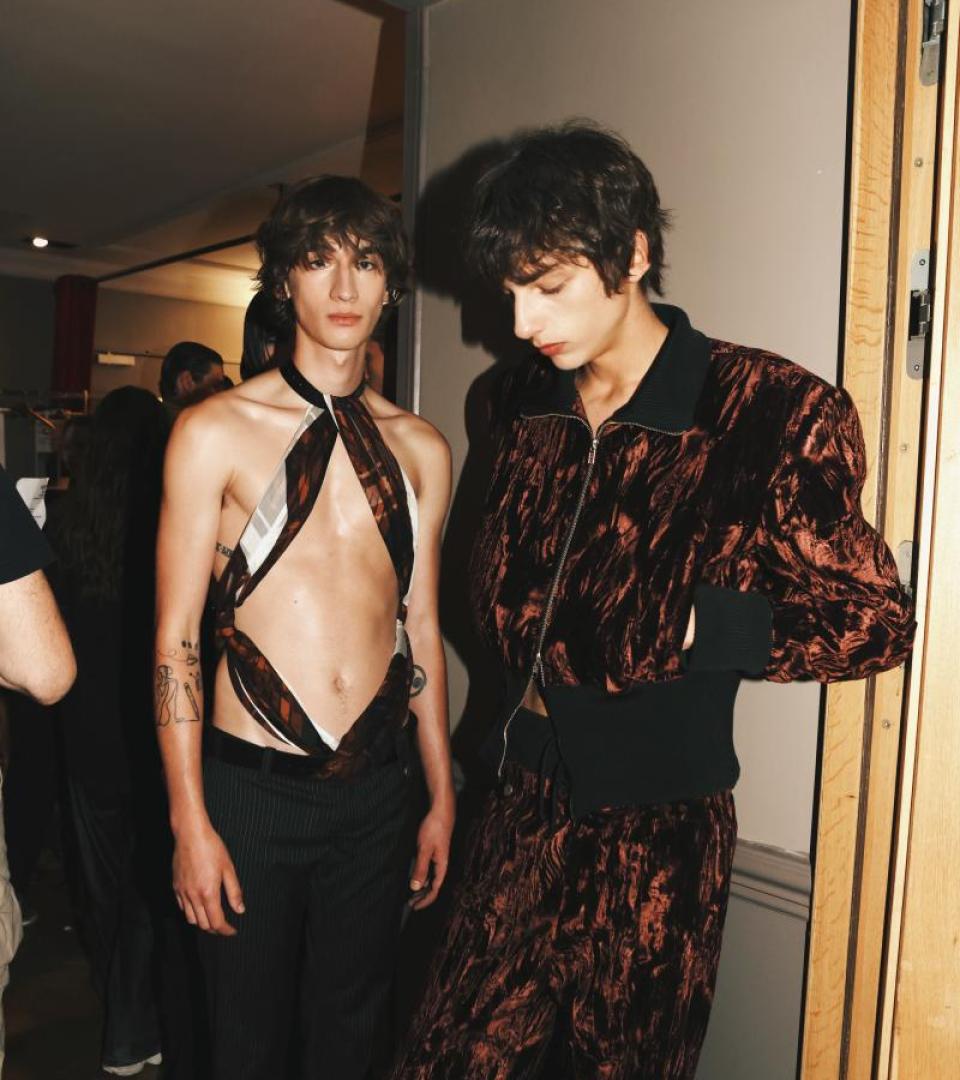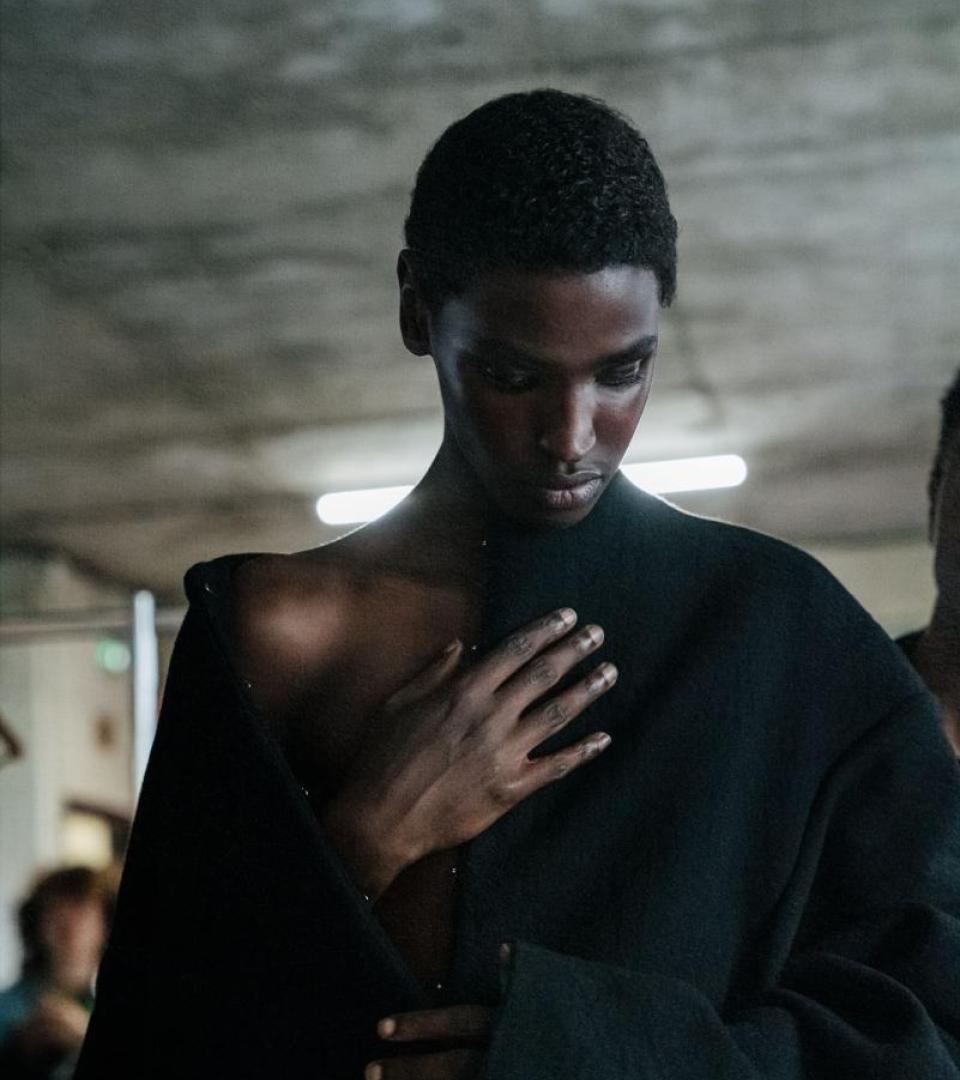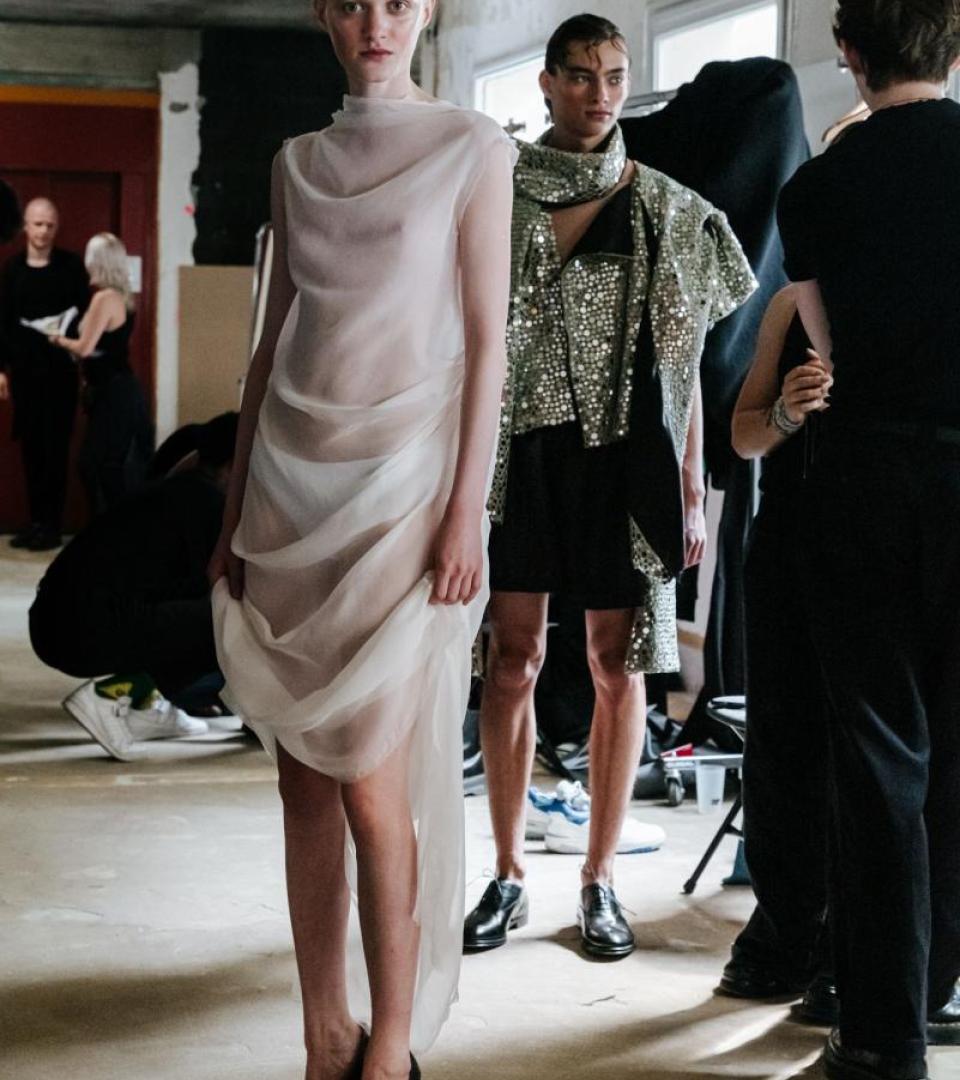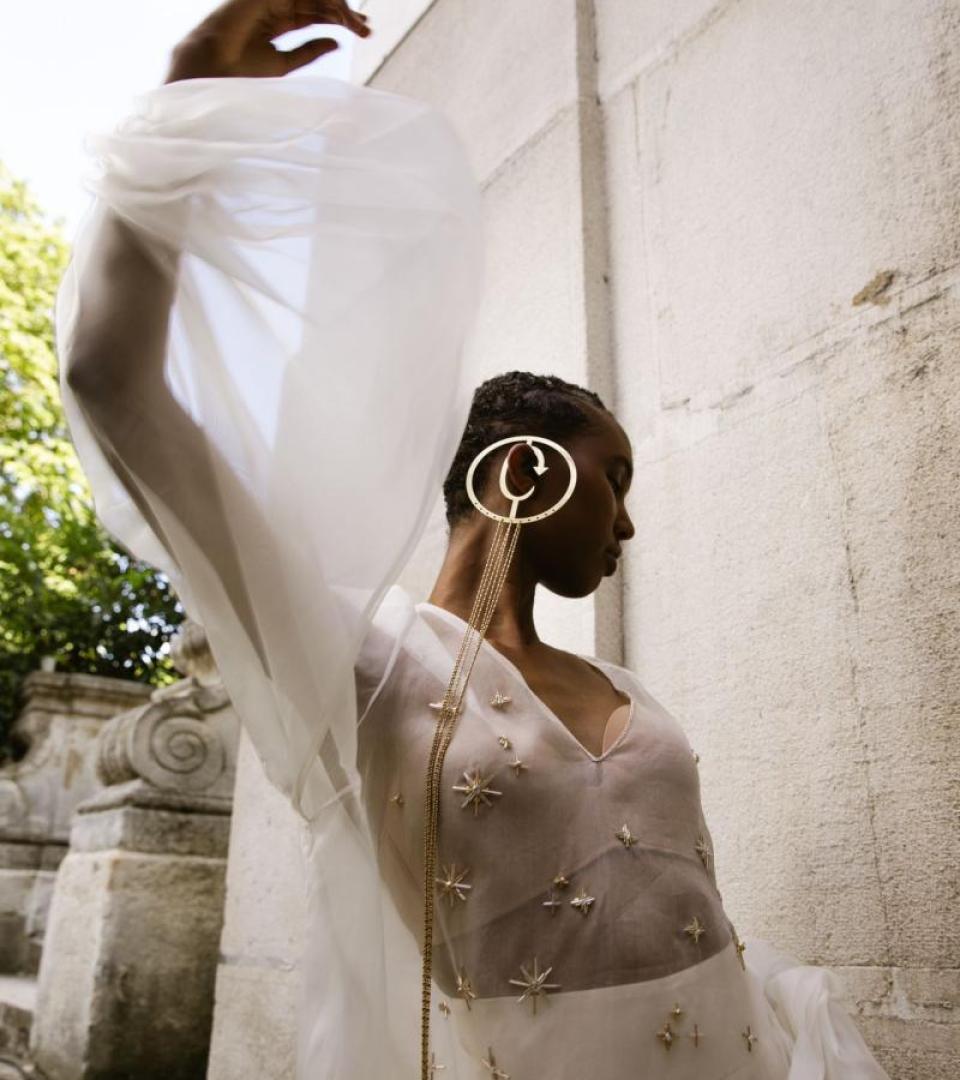What creates an emotional response for you in fashion today?
It’s been a long time since I've been able to attend many fashion shows and it's true that the challenge is becoming more and more difficult for the designer. For me, a show is not just the clothes; it's the music, the hair and makeup, and of course the staging. I always like to see models who talk to me or that I recognise. It's always very emotional for me. Of course, the clothing is very important; it's more about the mix of colours, ideas, and proportions. All this can move me. I also love stories, and I like that the designer can tell a story.
What are you most curious to know about how designers work, how a collection comes together?
I am always very surprised when I am invited to preview a collection and I see the mood boards, because in the end they look a lot alike. There are often looks that you know or reference photos that you know. I like it when designers mix art and things that are a bit, let's say, poetic, in their mood board. What I like the most is when the designer thinks of a woman, or an idea of a woman, or a man. That's the way we worked with Tom Ford; we thought of a specific woman. I like it when shows almost look like movie scenes.
In what ways are you seeing progress in fashion mirroring progress in the wider world?
Today, thanks to social media, we realise what is happening on the planet, what people are wearing in India, in Mexico, in Sweden. I think it's a plus for fashion, without being accused of cultural appropriation. Which is very difficult, because sometimes we are just inspired, we don't want to copy. But designers have to be more and more careful. The way the front row dresses or the way designers make fashion proposals are far from my personal culture, and I find that excessively interesting.
If you could change one aspect of how we experience fashion today, what would it be?
I think fashion shows and designers have to do collections too quickly, plus pre-collections, crazy prices, etc. I don't think a designer can have enough creativity and time to make so many different collections. Fashion happens with a stop watch and it must be very difficult for designers and we really feel it in the collections – when inspiration is not always on the agenda.
What stands out as the most potentially disruptive influence on fashion in the near future?
Today, for creators who should have practically total freedom, they are always afraid of doing or saying something that could be misinterpreted. So they have to be very careful, which is a good thing. But sometimes it's a bit too much because fashion should be very free. And we are always afraid of shocking, disturbing, hurting people or their culture. And I think it somewhat clips the wings of designers. And it may prevent them from expressing themselves completely regarding what they want, so much so that they are afraid of being let go at the end of the show. I think that doing a show is very brave; it's very long, very difficult. And when I see a bad article after a show, as someone who has done many collaborations with shows, I think of all the people who have spent six months behind this show – designers, as well as their assistants.
This interview has been lightly edited for length and clarity.



